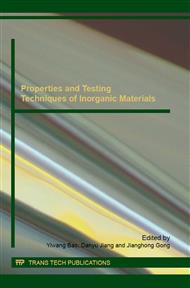p.60
p.68
p.72
p.76
p.82
p.89
p.93
p.99
p.103
Numerical Simulation of Powder Dispersion Performance by Different Mesh Types
Abstract:
OBJECTIVE To investigate the influence of mesh type on numerical simulating the dispersion performance of micro-powders through a home-made tube. METHODS With the computational fluid dynamics (CFD) method, a powder dispersion tube was meshed in three different types, namely, tetrahedral, unstructured hexahedral and prismatic-tetrahedral hybrid meshes. The inner flow field and the kinetic characteristics of the particles were investigated. Results of the numerical simulation were compared with literature evidences. RESULTS The results showed that using tetrahedral mesh had the highest computational efficiency, while employing the unstructured hexahedral mesh obtained more accurate outlet velocity. The simulation results of the inner flow field and the kinetic characteristics of the particles were slightly different among the three mesh types. The calculated particle velocity using the tetrahedral mesh had the best correlation with the changing trend of the fine particle mass in the first 4 stages of the new generation impactor (NGI) (R2 = 0.91 and 0.89 for powder A and B, respectively). Conclusions Mesh type affected computational time, accuracy of simulation results and the prediction abilities of fine particle deposition.
Info:
Periodical:
Pages:
82-85
Citation:
Online since:
February 2016
Authors:
Keywords:
Price:
Сopyright:
© 2016 Trans Tech Publications Ltd. All Rights Reserved
Share:
Citation:


